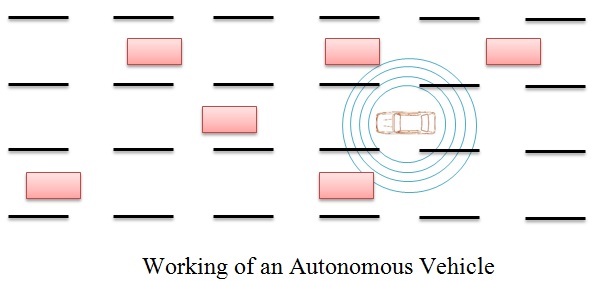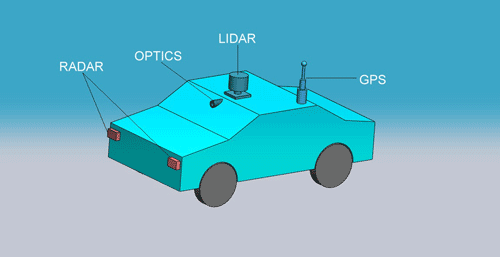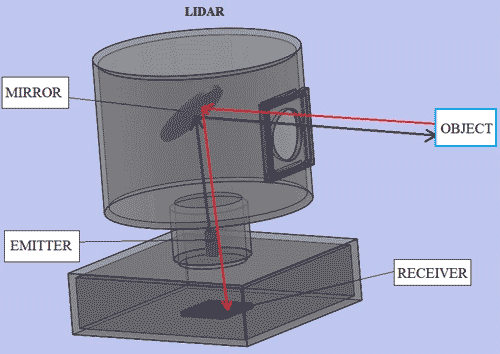Autonomous Vehicles
by Thagoor Vallabhaneni, Clemson Automotive Engineering Graduate Student
- Basic Description
-
A vehicle that can drive itself by sensing its environment is called an Autonomous vehicle or Driverless vehicle. A human may choose the destination, but is not required to do any mechanical operation of the vehicle. An autonomous vehicle navigates to the destination by means of various sensors (RADAR, Optical Image, LIDAR, GPS, Wheel Speed) and Vehicular communication systems.


The Light Detection And Ranging (LIDAR) which is mounted on the roof of the vehicle is the most important device in the Autonomous vehicles. The LIDAR consists of an emitter, mirror and receiver. The emitter sends out a LASER beam that bounces off a mirror that is rotating along with the cylindrical housing at 10 revolutions per minute. After bouncing off objects, the LASER beam returns to the mirror and is bounced back towards the receiver, where it can be interpreted into data. The vehicle can then generate a map of its surroundings and use the map to avoid objects.

The vehicle also carries other sensors which include RADARs mounted on the front and rear bumpers, that allow the car to see far enough to be able to deal with fast traffic on freeways, an Optical Image Sensor, positioned near the rear-view mirror, that detects traffic lights, a GPS, inertial measurement unit, that determines the location of the vehicle and keep track of its movements and the Wheel Speed Sensor.
The signal from the sensors are used by the Electronic Control Unit for decision making using a software code. Based on the information from the sensors, the Electronic Control Unit gives signal to the actuators, which in turn control the vehicle. Also, real time information of the surroundings is output to the user interface located inside the vehicle.

Vehicular communication systems are an emerging type of networks in which vehicles and roadside units are the communicating nodes, providing each other with information such as safety, warnings and traffic information. Autonomous vehicles integrated with vehicular communication systems can be more effective in avoiding crashes and traffic congestions.
- Sensors
- LIDAR, Optical Image Sensors, RADAR, GPS, Wheel Speed Sensors
- Actuators
- Servo Motors, Relays, Steering wheel control, Brake control, Throttle control
- Data Communications
- Control Unit Communication: Typically Control Area Network (CAN) Bus System
- For More Information
- [1] Robot-Car Technology by Google, YouTube, Oct. 11, 2010.
- [2] Autonomous Car, Wikipedia.
- [3] The OSU Autonomous Vehicle, The Ohio State University, Control and Intelligent Transportation Research Lab.
- [4] How Autonomous Vehicles Work, DriveSteady.com, Sep. 8, 2011.
|

